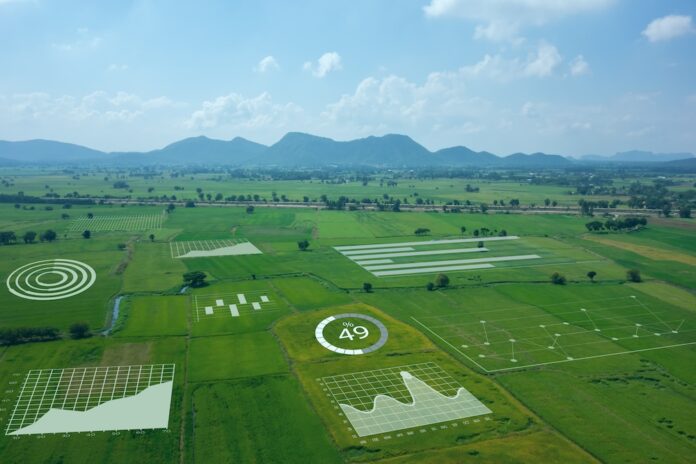The rural sector wants to embrace digitisation but internet connectivity is seen as one of the strongest obstacles to doing so
Almost half of the farms in Germany (47%) are currently dealing with possible applications of AI, while one in ten companies (9%) is already using it, and a further 38% are planning or discussing it. However, in a study carried out by Germany’s digital association Bitkom and German Agricultural Society (DLG) looking at the digitisation of agriculture, more than half of respondents (51%) consider inadequate Internet coverage to be one of the strongest obstacles to achieving their AI aspirations.
This snapshot is important given Germany is among the top four agricultural producers in the European Union – producing €50 billion worth of agricultural products each year. Germany is also the second largest organic market in the world (behind the United States) and the survey showed 4 out of 5 companies concluding that digitisation enables more environmentally friendly production.
Europe’s governments understand that connecting the rural sector is sometimes uneconomic, but many will need to examine the opportunity cost of not supporting connectivity incentives to bring this about and delivering the connected farm.
Despite more than half of the respondents complaining about a lack of involvement in the planning of political measures, the opportunities of digitiation are being seized. Whether sensor technology, robotics or digital field index, the use of digital technologies has generally increased in the past two years: GPS-controlled agricultural machinery is the most common, which is already used by 69%. Two years ago, it was only 58%. This is followed by digital field files or cow or sow planners with 68%. This is used to track breeding cycles in animal husbandry, among other things. Farm or herd management systems are now used by 46%. of farms, compared to only 32% in 2022.
An opportunity for the sector
In general, a large majority (79%) of farmers see digitization as an opportunity for their farm. Only 15% see it as a risk, and for 6% digitization has no influence on operations. The biggest advantages that farmers personally perceive on their farms through digital applications are time savings (69%), higher efficiency in production (61%) followed by physical relief (57%).
Specifically, 91% of farmers believe that digital technologies help to save fertilizers, pesticides and other resources. 69% say they can contribute to increasing animal welfare. 67% say that with the help of digital technologies, farms can reduce costs in the long term and 60% see this as an improvement in the quality of agricultural products.
Sensors, drones and management systems
36% of farms already rely on applications for the site-specific application of fertilisers (2022: 30%) and 30% for the application of plant protection products (2022: 23%). Sensor technology in animal husbandry and crop production is used by 28% (2022: 22%). Predictive maintenance, for example for agricultural machinery, is used by a quarter (25%) (2022: 19%). 24% use automatic feeders or intelligent feeding systems (2022: 24%). Drones are also used by just under a quarter (23%), compared to 19% in 2022. 12% are already relying on robotics (2022: 10%). A total of 90% of the companies use at least one of these digital solutions.
Challenges to the digital farm
While politicians can help on the investment front, farmers want the industry to reduce the complexity of the tech. More than half (54%) of respondents said digitisation is a challenge, despite the potential rewards.
When asked about the strongest obstacles to the digitisation of agriculture, most (75%) cite high investment costs. This is followed by concerns about more bureaucracy at 61% and insufficiently standardised interfaces and networking of systems at 59%. Half (52 %) of the companies complain about a lack of involvement in the planning of political measures. 51% consider inadequate Internet coverage to be one of the strongest obstacles.
This is followed by concerns about a loss of data sovereignty or a high level of complexity of digital systems with 49% each. 47% are concerned about IT security and 41% see a lack of digital skills as an obstacle.
Where AI will impact
The larger the farm, the more intensive the use and engagement with AI: while only 27% of farms with 20 to 49 ha use, plan or discuss the use of AI, the figure is 38% among farms with 50 to 99 ha and even 52% for large farms of 99 ha or more. “Agriculture is one of the pioneers of AI and is ahead of most other industries. AI can massively relieve the burden on farms, leaving farmers more time for other tasks. Smaller companies in particular should make greater use of the possibilities of AI,” said Bitkom CEO Dr Bernhard Rohleder.
DLG VP Prof. Dr Till Meinel, Institute of Construction and Agricultural Machinery Technology, Cologne (IBL) added: “The use of AI is not a trend, but increasingly an absolute necessity due to the diverse burdens on farm managers.”
The greatest potential for AI use in agriculture is seen in forecasts and crop protection, but also in office work: 54% of farms that are already using AI, planning or discussing it do so for climate and weather forecasts, 36% for market analyses or price predictions, 28% each for harvest and production planning or yield forecasts. 46% of farms that use, plan or discuss AI want to improve crop protection, for example through disease diagnoses, and 20% want to improve health monitoring in livestock farming.
But AI is also being planned, discussed or already used away from the barn and field, at 4 out of 10 companies (39%) for everyday office work such as administrative activities.



